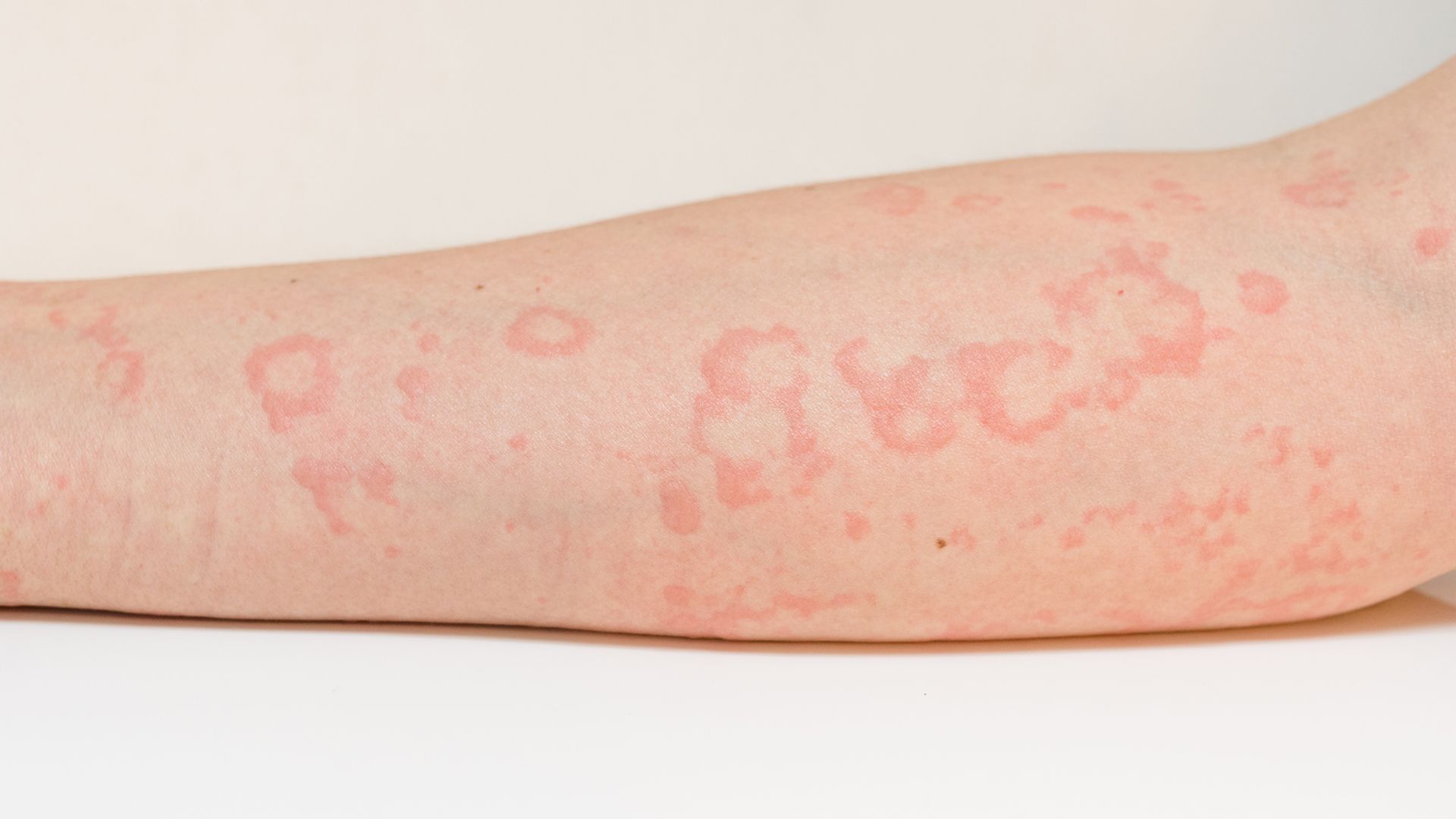Hives—also known as wheals, or by their clinical name, urticaria—are red, raised, swollen welts that appear on the surface of the skin. Up to one half of people who experience hives also experience angioedema, which is similar to hives, but causes painful swelling beneath the skin instead of near the surface.
Hives that last less than six weeks are categorized as acute urticaria. Hives that last longer than six weeks are categorized as chronic urticaria. Acute urticaria is relatively common, while chronic urticaria only affects a small percentage of the total population.
Chronic urticaria can further be divided into two major categories—chronic inducible urticaria (which is sometimes called physical urticaria) and chronic spontaneous urticaria (previously called chronic idiopathic urticaria).
Here, we will take a closer look at those categories.
Chronic inducible urticaria
Inducible urticaria is the clinical term for hives that can be induced by exposure to an environmental trigger. This type of urticaria is also called physical urticaria, because the triggers are physical—exposure to cold, physical exertion, sweating, vibration, pressure against the skin, and changes in body temperature are all possible triggers.
Dermographism (also called dermographia or autographism) is one type of inducible urticaria. With this type, hives are triggered by firmly stroking, rubbing, or scratching the skin. Hives take the shape of raised red lines in the pattern of the scratching, rubbing, or stroking. This type is sometimes called “skin writing.”
Chronic spontaneous urticaria
Chronic spontaneous urticaria refers to chronic hives that have no identifiable cause. The majority of cases of chronic urticaria fall into this category.
Some research supports the idea that chronic spontaneous urticaria is the result of abnormal immune system activity that causes inflammatory chemicals to be released into the skin. Hives are also associated with a number of other health conditions, including autoimmune disorders and other disorders that affect the immune system. In other cases, the hives may be caused by repeated contact with an unknown and unidentified trigger.
Treating chronic urticaria
The language and terminology around chronic urticaria can be confusing. The names used for the different categories of this disease have changed over time, and different terms sometimes refer to the same category of hives—as is the case with chronic spontaneous urticaria and chronic idiopathic urticaria. The most important thing anyone experiencing hives can do for their health is to work with a healthcare provider who understands the condition, who can help them find a treatment approach that works. Chronic hives can be a frustrating condition to live with, and while the cause of chronic hives is unknown in many cases, there are treatments available.






